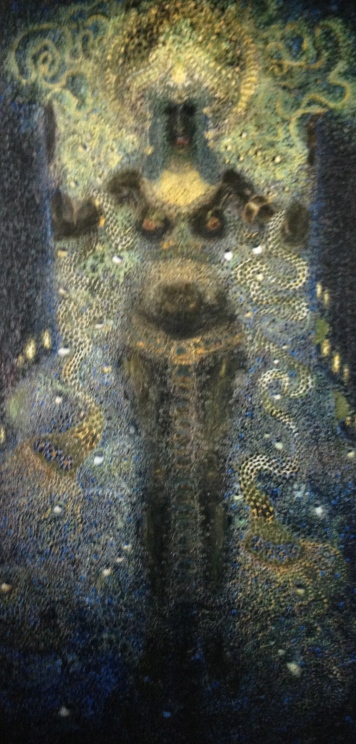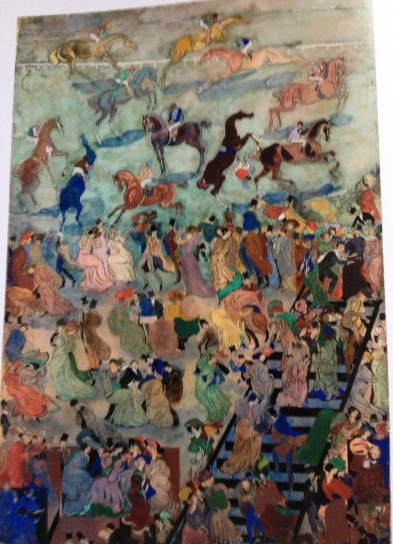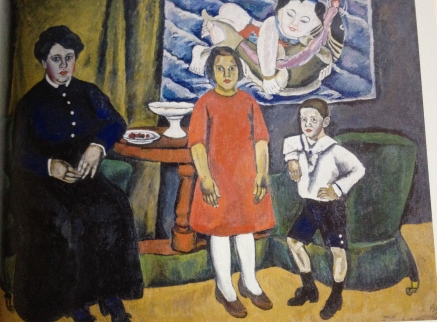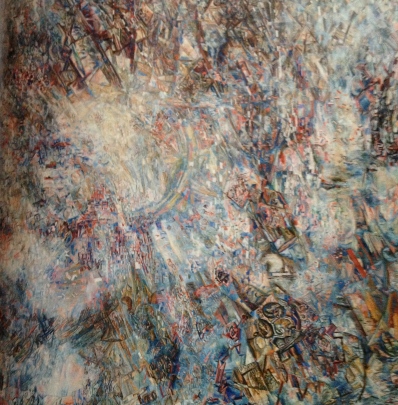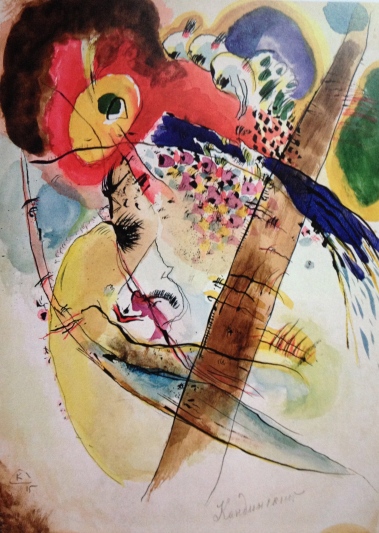The Russians are coming. The Russians are coming. The Russians came to Firenze and they are magnificent! The recent exhibition at the Palazzo Strozzi lived up to my high expectations of that institution’s efforts and more. My only criticism is that the title does not reflect the true character of the exhibit.
We studied the Russian moderns at university–who has not marveled over Kandinsky’s delicate and provocative experiments in color and form? Who has not thrilled to Stravinsky’s flights of musical fancy? Who has not appreciated the simple rhythmic forms of Malevic. What we never studied was the intimate connection between these artists, their numerous colleagues, and the rich animistic indigenous culture that informs all things Russian. Euro centric, we look for the symbols and signifiers that we recognize, that speak to the post nationalist, post Christian West. We dismiss, ignore or devalue the exotic/erotic asian imagery that pervades the Russian aesthetic as too Other. Yet, who are these complicated people if not the descendants of the Samoyeds, the tribes of Siberia and Mongolia, and the paleolithic ancestors of Lake Bakal? And how cannot these spiritual ancestors inform the collective unconscious of this polyglot population? These are questions raised in “The Russian Avant-Garde, Siberia and the Orient.” This grounding enabled me better to understand and appreciate the pre-Social Realism period of Russian art. And isn’t that what any museum exhibition should strive to achieve?
The catalogue is well written with excellent reproductions of the works and can be purchased online–well worth the expense. What doesn’t appear in the catalogue is the physical flow of the exhibition. The rooms were arranged to develop a comprehensive narrative that engages the viewer on a personal level. Each room told a new chapter of the story and deftly posed a personal question relative to the images: i.e., How would you feel alone in the wilderness? What animals populate your imagination? How would it feel to leave behind everything you know?
Overall, the impact of this exhibition was stunning in the literal sense. So overwhelming were the images that I could not speak. The original title and the theme of this exhibition was Fire and Ice; and it certainly lived up to that idea–the simultaneous experience of passion and intellect.
My selection of paintings from the catalogue is purely arbitrary–I was drawn to these and they are representative of the breadth and variety of the exhibition. Feel free to comment.
